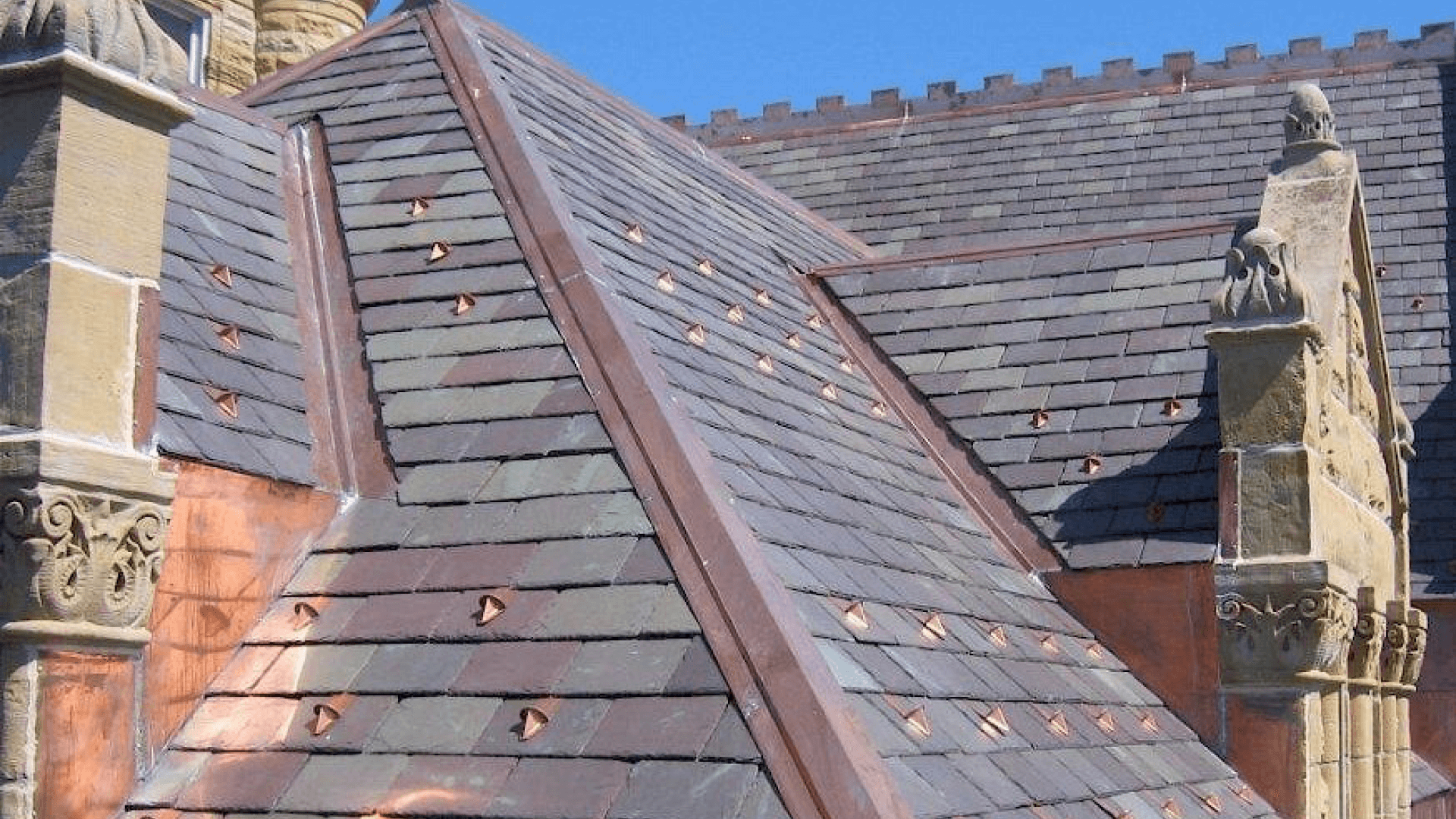
While the historic roofing field includes a wide variety of different materials, slate and clay tile are two of the more predominant types out there, in large part due to their durability, expected lifespan, and reliability in protecting your historic structure. But even though slate and clay tile roofs are mainstays in any number of historic properties, there are some key differences between the two, both in their characteristics and benefits and applications where they’re most commonly used.
It can be tricky for historic property owners to understand whether a slate vs clay tile roof is best for their historic property, and it can also be difficult to truly know whether your slate or clay tile roof has been compromised and is in need of repair or replacement.
Here, we’ll look at slate vs. clay tile roofing to help identify the prime differences between these historic roofing materials, and if now is the right time to have your historic roof inspected.
What’s important to know about historic slate tile roofing?
The slate for slate tile roofing used in historic structures is actually quarried from the ground, refined, and produced using the same techniques that have been used for more than 500 years. The stately appearance of slate makes it common for more commercial historic properties, like churches, cathedrals, and even castles.
For example, the restoration of the St. John's church of christ in Monroe, Wisconsin, called for the use of multi-colored Vermont slate to return the structure to its original glory.
Slate is very dense and compact, and it’s also a natural insulator and fireproof, which makes it an ideal material for roofing systems. In addition, slate does not absorb water easily, and, when used in historic roofing, offers a roofing system lifespan upwards of 80 years.
The natural insulation qualities of slate make it ideal to help control heating and cooling costs, which can in turn help reduce overall energy consumption and impact to the environment. What’s more, slate is a less conductive and flammable material, qualities that make it well-equipped to protect against lightning strikes and fire.
However, slate does have some limitations. Slate is a brittle roofing material and is susceptible to cracking or chipping as a result of direct contact. As such, slate can be a more difficult roofing material to work with for roofing installers without expertise, which is why historic property owners need to partner with restoration experts who have decades of experience in safely, efficiently, and cost-effectively repairing and replacing slate roof systems.
What’s important to know about historic clay tile roofing?
Clay tile roofs are much more common in historic residential properties, though the long history of clay tile as a roofing material means it’s also found in historic commercial structures like libraries, universities, courthouses, and government or civic buildings.
Clay tiles are manufactured from earthen clay that are specially processed to the durability and reliability that’s required for roof systems. In addition, the composition of clay tiles makes them suitable to withstand a variety of environmental conditions, including sun, precipitation, and high winds.
Clay tile was a key component in our restoration of the riviera, a historic ballroom on the shores of Lake Geneva, about 60 minutes northeast of Rockford, Illinois.
Plus, clay tiles also offer insulation capabilities to help heat and cool your historic structure, and clay tile roofs usually require very little maintenance. What’s more, there is a wide range of clay tile types and colors, and this diversity can help historic property owners more specifically tailor the appearance and curb appeal of their structure.
The main types of clay tile include:
- Clay French tile
- Clay interlocking tile
- Clay pan and cover tile
- Clay shingle tile
- Clay Spanish tile
Like slate, clay tiles are heavy and can be cumbersome to repair and replace. In more humid climates, clay tiles are also prone to the accumulation of mildew and algae, though these buildups are relatively simple and inexpensive to remove.
How to know if my slate or clay tile roof needs to be restored?
Determining whether your slate or clay tile roof needs to be repaired or restored starts with the aesthetic condition of roofing tiles. Cracked, chipped, and broken clay or slate roof tiles indicate damage or deterioration from either direct contact or weather conditions, and these visual indicators are the first sign that your historic roof should be inspected sooner rather than later.
Of course, historic slate or clay tile roofs that do not promote adequate water run-off or demonstrate moisture buildup or pooling can also be a sign that your roofing system needs to be restored or replaced.
This is where our magellan building assessment can help historic property owners understand the current condition of their entire roofing system, and what the necessary scope of work will include to restore their historic property.
With decades of experience in historic slate and clay tile roof restoration, our expert craftspeople have the knowledge, skills, and tools to preserve your historic building for generations to come. Schedule an inspection of your historic property.
